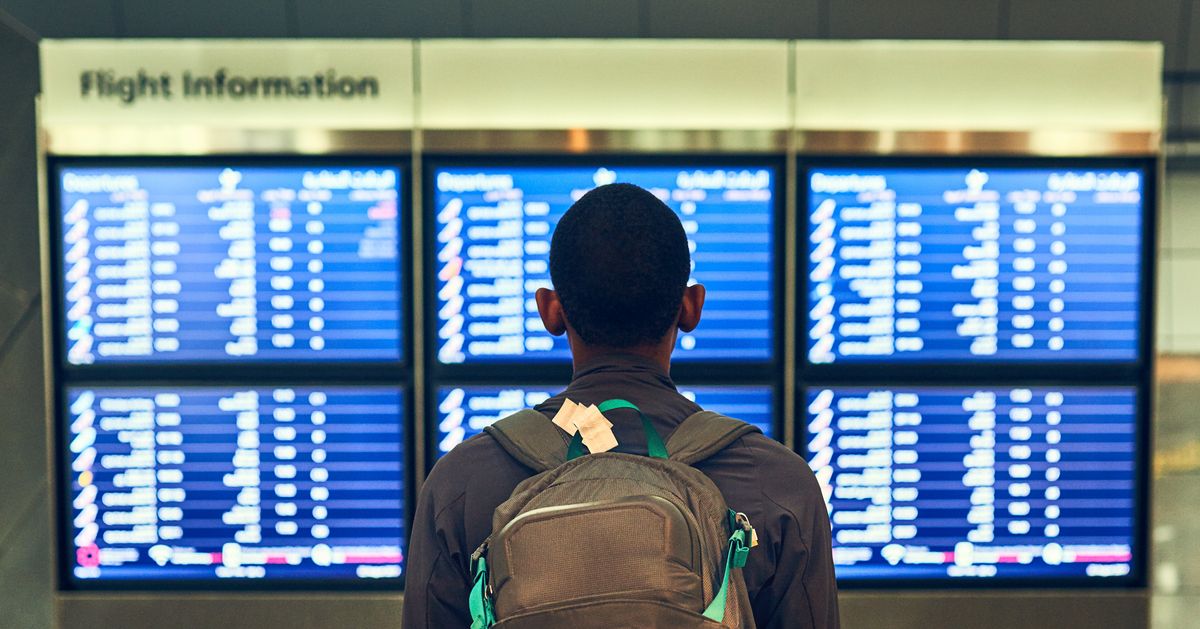Flight delays are an unfortunate reality of air travel that can often lead to frustration and uncertainty. However, there are measures you can take to minimize your risk of experiencing a delay or at least be prepared for it. We consulted with travel experts who shared valuable insights that many inexperienced flyers may not be aware of. Armed with this knowledge, you can be better equipped to navigate flight delays and make the experience less stressful. So let’s dive into some tips and tricks!
One of the most valuable tools at your disposal is the ability to track your airplane. By downloading the mobile app for your airline, you can receive notifications about gate changes and delays before they are even announced at the airport. Additionally, these apps allow you to monitor your plane’s journey and anticipate potential delays. As Ravi Roth, a queer travel expert and host of the “Gaycation Travel Show” suggests, you can see where the plane is coming from and if it is arriving on time.
In addition to airline apps, there are other non-airline apps and websites that allow you to track your flight. FlightAware and Flightradar are popular options that provide real-time information on your flight’s status and previous departures. A simple Google search can also yield informative results regarding the published flight status of your plane.
When it comes to choosing a flight, opting for an earlier departure time can reduce the likelihood of a delay. Adit Damodaran, an economist at the travel booking app Hopper, explains that later flights, which depend on crews and planes from prior segments, are more susceptible to delays. Therefore, booking the first flight of the day can help you avoid the “ripple effect” caused by delays earlier in the day.
It’s important to note that while morning flights have advantages, they are not immune to delays. However, in the event of a delay or cancellation, morning flights typically offer more alternatives for reaching your destination on the same day compared to late afternoon or evening flights.
Another effective strategy for avoiding delays is to choose nonstop flights whenever possible. Nonstop flights involve fewer flights and eliminate the risk of missing connections due to delays. Although nonstop options may be more expensive, they provide peace of mind and save you the hassle of navigating multiple airports and gates. It’s worth considering the extra cost if delays are a major concern for you.
In cases where nonstop flights are not available, you can be strategic about your choice of layovers. Aim for at least an hour of layover time between flights and select a city that offers multiple flights to your final destination. Choosing a route with several daily flights increases your chances of being rebooked quickly in the event of a delay.
When planning your travel, don’t forget to factor in weather conditions at flight hubs. By being aware of weather patterns at your departure and arrival airports, as well as along the flight route, you can anticipate potential delays. Paying attention to weather is especially crucial during the holiday season when winter storms can disrupt air travel. Additionally, remember that delays can occur even in clear weather due to factors such as disruptions to incoming flights, staffing issues, or technical problems.
To further aid your decision-making process, you can check the on-time percentage of your flight before booking. Airlines are required to share on-time flight performance data on their websites. If you can’t find this information on the airline’s website, there are other platforms like FlightAware and FlightStats that provide this data. The U.S. Bureau of Transportation Statistics website also offers statistics on airline and airport delays, offering a comprehensive view of flight performance.
It’s crucial to familiarize yourself with your rights as a passenger. The Department of Transportation website outlines the rights and regulations for delays at the airport or on the tarmac. For example, airlines are required to allow passengers to leave a plane after three hours for domestic flights and four hours for international flights. Additionally, passengers have the right to receive up-to-date information about their delays from the airline.
In the unfortunate event of a delay, it’s worth noting that you may be entitled to compensation. By reviewing the airline’s terms and conditions, you may discover avenues for receiving a refund. In the European Union, eligible passengers can be compensated for delays of three hours or more. Additionally, your travel insurance plan might include provisions for compensation in the event of a delay, so it’s essential to review the fine print. Airlines are obligated to provide a refund in cash rather than miles or credits with the airline, so don’t hesitate to request cash if that is your preference.
In conclusion, while flight delays can be frustrating, they are not entirely out of your control. By utilizing technology, choosing flights strategically, staying informed about weather conditions, and understanding your rights as a passenger, you can minimize the impact of delays and make your travel experience less stressful. Remember, knowledge is power when it comes to navigating flight delays!
Denial of responsibility! VigourTimes is an automatic aggregator of Global media. In each content, the hyperlink to the primary source is specified. All trademarks belong to their rightful owners, and all materials to their authors. For any complaint, please reach us at – [email protected]. We will take necessary action within 24 hours.


